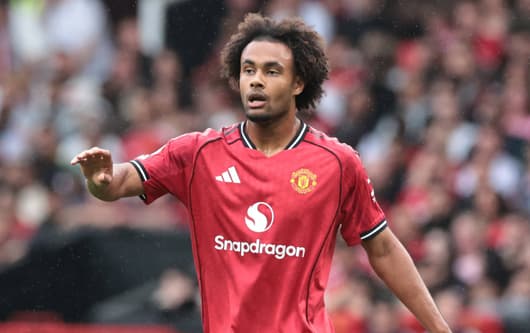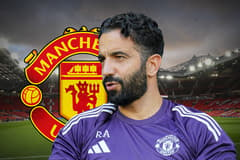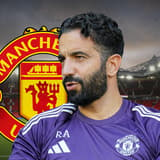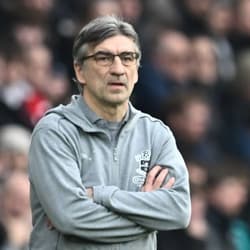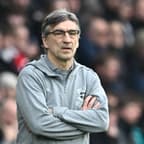-
Feature
- 2 hours ago
Figo at Madrid, Cantona at Man Utd – the transfers that created legendary teams

Whether it be via a departure or a new arrival, football transfers have the ability to completely transform the fortunes of a club.
With a departure, a completely new team can be purchased with the proceeds. or with an arrival, the player can galvanise the squad by injecting that little bit of extra quality.
Here are 10 transfers that helped a club construct legendary teams.
FOOTBALLTRANSFERS' MOST VALUABLE PLAYERS IN THE WORLD
Ruud Gullit and Marco van Basten - Ajax/PSV to Milan
In the mid-1980s, Milan were a shadow of the team that had won two European Cups in the 60s. Indeed, when Silvio Berlusconi took them over in 1986, they were only just in the process of re-establishing themselves as a Serie A club. The charismatic owner injected vast funds into the team and allowed them to sign Ruud Gullit from PSV and Marco van Basten from Ajax to their ranks, signings that were to be instrumental to the team that won back-to-back European Cups in 1990 and 1991.
Both were among the finest players of their generation, and they brought attacking impetus to a side whose defensive qualities were astutely honed by Arrigo Sacchi. These transfers allowed Milan to secure a generation of dominance in Italy, as well as years of success in Europe.
Eric Cantona - Leeds to Man Utd
Eric Cantona remains one of the most iconic players to have graced the Premier League.
“If ever there was one player, anywhere in the world, that was made for Manchester United, it was Cantona,” said Sir Alex Ferguson.
The nomadic striker found a home at Old Trafford, the perfect stage to fully express his remarkable talent, and a manager who would give way to the Frenchman’s individuality.
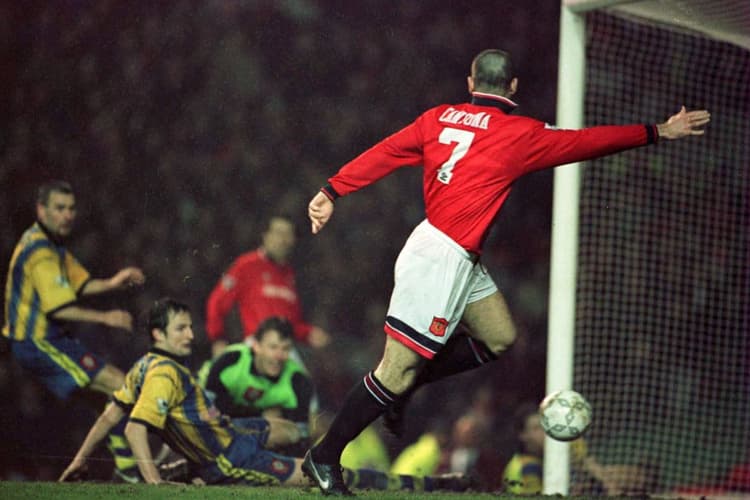
Cantona was a polarising figure and a true maverick on and off the pitch. Yes, there would be controversies like the famous kung-fu kick at Crystal Palace, but it was moments like that that actually added to his aura and box-office.
He would help Man Utd enter a new era of domestic domination, inspiring the Red Devils to four Premier League titles and two FA Cups, while the famed Class of '92 flourished under his leadership.
Patrick Vieira and Thierry Henry - Milan/Juventus to Arsenal
Arsene Wenger wasted no time at all in implementing his philosophy at Arsenal, clamping down on the drinking culture at the club and banning fast food.
One of his first signings was one Patrick Vieira who would go on to become one of the club's, and the Premier League's most famous leaders.
In Wenger's first season, Arsenal finished third, and then they secured the double in the next campaign.
However, it wasn't until the acquisition of Thierry Henry in 1998 that Arsenal truly began to become a legendary team - indeed an 'Invincible' team that remains the only one undefeated over the course of an entire campaign.
The only thing that was missing from the Gunners during this period was success in Europe, which evaded Wenger.
Luis Figo - Barcelona to Real Madrid
A switch from Barcelona to Real Madrid seems unthinkable, even to this day, but Figo had other ideas.
For a world record fee, the Portuguese winger's signing marked the beginning of Florentino Perez's Galactico era of global stars.
A resounding success, 37 goals in 164 games fails to capture the genius of the Ballon d'Or winner.
Though bigger names like Zinedine Zidane and Ronaldo would arrive, Figo remained a key member of the squad for years and developed a fabulous understanding with his fellow Galacticos.
The first ever Galatico, he won two La Liga titles and the Champions League at Santiago Bernabeu.
Claude Makelele - Real Madrid to Chelsea
It takes a special player to have a position named after them, but that is exactly what Claude Makelele achieved after spells at Real Madrid and Chelsea.
Underappreciated at Madrid, Chelsea were only to happy to bring the Frenchman in and have him marshal the back four to a standard nobody else could get close to at the time.
At Chelsea, Makelele became a vital member of the team which Mourinho led to successive Premier League titles in 2005 and 2006.
There were anchorman midfielders before and after Makelele, but his ability to sweep up the trouble in from of his defence is a talent that isn't matched by many.
Dani Alves - Sevilla to Barcelona
Pep Guardiola's side will forever be famous for being powered to success by La Masia. Lionel Messi, Gerard Pique, Andres Iniesta, Carles Puyol, Sergio Busquets, Pedri and Xavi were all sensational during Barca's dominance under Pep.
However, there is one vital cog in the machine that didn't come from La Masia - Dani Alves.
Widely considered one of the best right-backs of all time, no current player in the world has won more trophies than the Brazilian.
Crucially, he wasn't just a right-back, but more of a wide playmaker as his prowess on the ball was just as impressive as those ahead of him. His position on the flank allowed Messi to cut inside and tear teams apart.
David Silva and Yaya Toure - Valencia/Barcelona to Man City
Before the signings of David Silva and Yaya Toure, Manchester City’s signing policy had been unimpressive. OK, Robinho had been signed as a show of strength, but there had been little thought behind the Brazilian’s arrival and more typical additions were the likes of Craig Bellamy and Roque Santa Cruz. Decent players, but not title winning ones.
That changed in 2010 with the arrivals of Silva and Toure, who joined up from Valencia and Barcelona respectively. These signings began a revolution with Man City that continues to be evident in their play today, although Pep Guardiola has infused his own style upon the club.
Between them, they would play more than 500 Premier League games it was the tone they set for the team that would prove more critical than anything else.
Andrea Pirlo - Milan to Juventus
When Andrea Pirlo was signed by Juventus as a free agent in 2011, it was thought that the best days of his career were behind him. Instead, he defied logic by being the basis around which Juve built a decade of dominance in Serie A.
He was the orchestrator of the Turin side, playing a deep role in midfield in which he set the tempo for a team that would go on to win nine titles in a row. His set piece prowess, coolness under pressure and elegancy further helped to establish his legacy.
It was Pirlo’s signing that saw Juve reach for the stars, with his legacy vibrating through the club until the departure of Cristiano Ronaldo in 2021 following the team’s failure to win 10 Serie A titles in succession.

Zlatan Ibrahimovic - Milan to PSG
Zlatan Ibrahimovic was not the first Paris Saint-Germain signing under the QSI era, but he was unquestionably the most important. That such a world star was willing to move to Parc des Princes validated the project that the club’s Qatari owners were building.
On the field, he proved every bit as decisive as was hoped – domestically at least. He ultimately became the club’s top scorer of all time, and though he failed to lead them to the much-cherish Champions League title, he set the platform for the likes of Edinson Cavani and latterly Neymar, Kylian Mbappe and even Lionel Messi to join up.
Philippe Coutinho - Liverpool to Barcelona
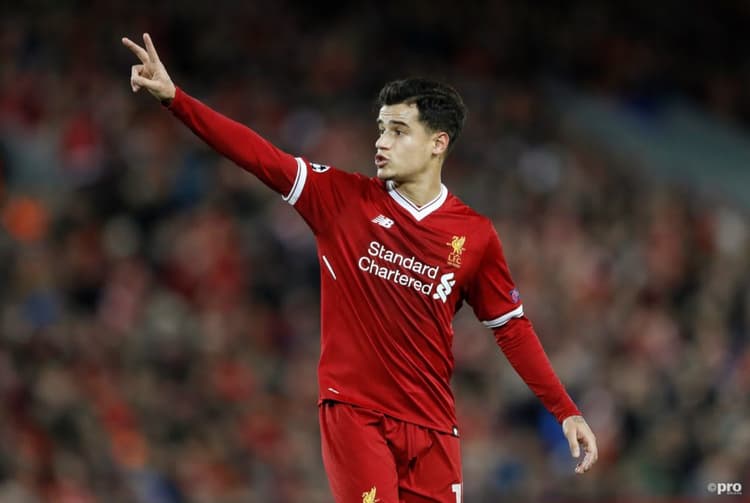
Philippe Coutinho is the man who set up much about what is great about Liverpool today. Sadly for the Brazilian, who was a hero at Anfield for his performances, it was his departure that was the catalyst to elevate the Reds back to a domestic and European superpower.
Liverpool drove a hard bargain with Barcelona to yield a €160m sale, and they used that money shrewdly.
In came Virgil van Dijk when it became evident that Coutinho might leave, with the Dutchman unequivocally the best centre-back of his generation. The following summer, proceeds from the sale were used to capture Alisson and Fabinho, who remain mainstays of Jurgen Klopp’s side four years later.

